Sulfur coated urea (SCU) is an innovative fertilizer technology designed to improve the efficiency and effectiveness of nutritional supply to plants. The need for sustainable and high-efficiency fertilization methods in modern farming has been increasing at an alarming rate. This problem is addressed by the SCU that offers a means for nitrogen to be slowly released which is one of the key plant-growing nutrients. Nutrients are continuously lost as they leach down or escape into the atmosphere, therefore this slow pace ensures that plants receive nitrogen over a long period. This article will explain why sulfur coated urea is important in bringing better crop yields, environmental conservations and economic efficiency in agriculture. If you have ever been involved in farming or gardening or if you work as an agricultural expert, it would be wise not to forget about these advantages of SCU when selecting your fertility strategies.
What is Sulfur Coated Urea and How Does It Work?
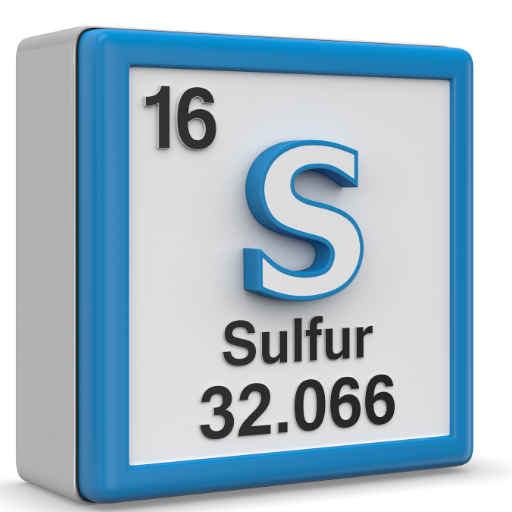
The sulfur coated urea (SCU) is a form of slow-release fertilizer, which involves coating urea granules with the layer of sulfur. This new technology reduces the rate at which nitrogen is released from the product to plants for use. The slow release function operates by forming a barrier that controls how water moves into sulphur and nitrate thus dissolving nitrates in the top dressing. When this outer layer of sulfur gives way slowly, it leads to careful release of inner urea content. This kind of controlled release limit nutrient loss through leaching and volatilisation so as to improve nutrient uptake efficiency resulting into better crop growth.
The Fundamentals Of Sulfur Coated Urea Fertilizer
Sulfur coated urea (SCU) fertilizer utilizes sulphur coating on urea granules thereby reducing nitrogen release in soils. Nitrogen availability over an extended period ensures that occur only if leaching or volatilization losses are kept low by such gradual impregnation process. Water having dissolved them, after some time this sulphur shell decomposes leading to uniformed diffusion mode through which plants take up more nitrogen effectively. That in turn provides regularized nutrition for crops hence increased productivity through good plant development and improved yields gained from consistently reliable crop production systems
The Science Behind Slow Release Nitrogen
Slow-release nitrogen fertilizers like sulfur coated urea leverage the properties of their coatings to control nitrogen availability. Here, the sulfur coating acts as a protective barrier, which regulates the penetration of moisture and the subsequent dissolution of urea. This results in a gradual release of nitrogen, matching plant uptake needs over time. The efficiency of this process depends on several parameters:
- Coating Thickness: Thicker sulfur coatings generally result in slower nitrogen release, as it takes more time for water to penetrate and dissolve the urea within.
- Temperature Sensitivity: Higher soil temperatures can accelerate the breakdown of the sulfur coating, influencing the release rate of nitrogen.
- Microbial Activity: Soil microorganisms can degrade the sulfur coating, further impacting the timing and effectiveness of nitrogen release.
- Soil Moisture: Adequate moisture is necessary for the sulfur layer to gradually break down and for the urea to be subsequently dissolved and utilized by plants.
The innovation behind sulfur coated urea effectively mitigates nitrogen losses through leaching (where water carries nutrients away from the root zone) and volatilization (where nitrogen is lost as gas to the atmosphere). By ensuring a more consistent nitrogen supply, SCU supports steady crop growth, enhances yield potential, and reduces the need for frequent fertilizer applications, thereby improving both economic and environmental sustainability in agricultural practices.
Comparing Sulfur Coating Versus Polymer Coating in Urea Granules
When comparing sulfur-coated urea (SCU) to polymer-coated urea (PCU), several key differences and similarities emerge. Both types aim to enhance nitrogen use efficiency by controlling the nutrient release rate, but they do so through distinct mechanisms and materials.
Release Mechanism:
- SCU: Utilizes a sulfur coating that degrades through environmental factors like temperature, moisture, and microbial activity. The coating acts as a timed barrier, allowing a more gradual release of nitrogen in response to soil conditions.
- PCU: Utilizes advanced polymer coatings that are highly engineered for precise nutrient release. These coatings rely on both physical and chemical processes to control nitrogen release, often triggered by specific temperature and moisture conditions.
Release Duration:
- SCU: Typically releases nitrogen over a 6-12 week period, depending on environmental conditions and the thickness of the sulfur layer.
- PCU: Offers more extended and precise control, with release durations ranging from a few weeks to several months, tailored to specific crop and soil needs.
Efficiency in Different Conditions:
- SCU: More susceptible to variations in temperature and microbial activity. Higher temperatures can accelerate degradation, while increased microbial presence can hasten coating breakdown.
- PCU: Provides more consistent performance across varied environmental conditions due to the stability and robustness of polymer materials.
Cost and Application:
- SCU: Generally less expensive to produce but may offer less precise release times and require closer monitoring of soil conditions.
- PCU: Typically more costly due to advanced materials and manufacturing processes but delivers more reliable and consistent results, reducing the frequency of application and potentially lowering long-term costs due to increased efficiency.
Environmental Impact:
- SCU: Can mitigate nitrogen losses through leaching and volatilization but may introduce sulfur into the soil, which might not be suitable for all crops or environments.
- PCU: Designed to minimize environmental impact by providing targeted nutrient delivery, reducing the need for excess fertilizer and associated runoff.
Technical Parameters:
- SCU Coating Thickness: 20-60 micrometers
- PCU Coating Thickness: 10-50 micrometers
- SCU Release Duration: 6-12 weeks
- PCU Release Duration: 1-12 months
In summary, while both SCU and PCU improve nitrogen utilization, their choice depends on specific crop requirements, environmental conditions, and cost considerations. The precision and extended control offered by PCU often make it a preferred choice for high-value crops or varied environmental conditions, whereas SCU provides a cost-effective solution for short-term nutrient management needs.
The Role of Sulfur-Coated Urea in Enhancing Nitrogen Use Efficiency
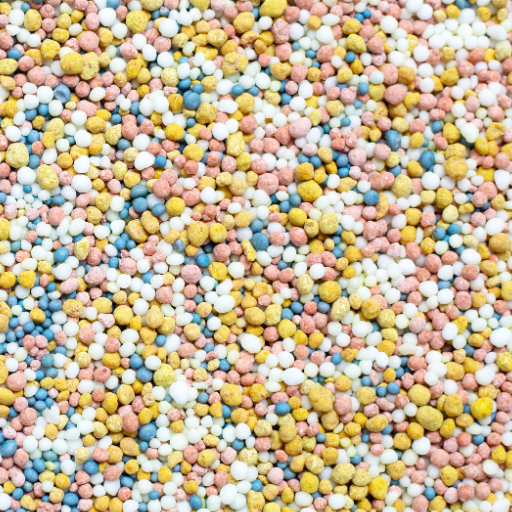
Sulfur-coated urea (SCU) plays an important part in improving nitrogen use efficiency by acting as a slow release mechanism for nitrogenous fertilizers. Through the process of sulfur coating, this slow release is achieved, which gradually breaks down, thus allowing a more controlled and uniform supply of nitrogen to the soil. This procedure is vital in that it lowers nitrogen losses caused by volatilization and leaching, thereby ensuring nitrogen remains available to plants over longer periods that correspond with their growth cycles most effectively. Thusly, steady availability of nitrogen ensures better plant growth and higher yields. Furthermore, SCU helps to reduce the total amount of nitrogen fertilizer needed hence reducing cost and preventing environmental pollution due to excess runoff.
Dissecting Nitrogen Use Efficiency (NUE) in Agriculture
Nitrogen Use Efficiency (NUE) in agriculture refers to how well applied nitrogen fertilizers are used by plants to produce desired outputs. NUE can be divided into two main entities; uptake efficiency and utilization efficiency. Uptake efficiency refers to the capacity of plants’ root system for absorbing nutrients like nitrogen from soils while utilization efficiency represents the ability to transform absorbed nutrition into biomass or yield. High NUE indicates efficient use of available sources by plants leading to optimal growth hence reducing the need for extra fertilizer application and minimizing environmental impacts associated with loss of N through volatilization or leaching. Enhancing NUE includes using precision application methods such as intelligent dosing systems as well as selecting suitable forms e.g., slow-release fertilizers among others plus inclusion of organic matter amendments that improve soil health and nutrient availability.
How Sulfur-Coated Urea Fertilizers Improve NUE
Sulfur-coated urea (SCU) fertilizers can significantly enhance nitrogen use efficiency (NUE) by providing a sustained release of nitrogen that matches the nutrient requirements of crops. This gradual release minimizes nitrogen losses caused by leaching and volatilization, ensuring that a higher proportion of applied nitrogen is available for plant uptake. The SCU technology encapsulates urea granules in a sulfur coating, which degrades slowly in the soil, thereby providing a controlled release of nitrogen.
- Nitrogen Release Rate: SCU fertilizers typically release nitrogen over a period ranging from 40 to 90 days, depending on the coating thickness and environmental conditions. This extended release period aligns with plant growth phases, enabling consistent nitrogen supply.
- Reduced Leaching and Volatilization: Studies have shown that SCU can reduce nitrogen leaching losses by up to 30% and volatilization losses by up to 50% compared to conventional urea fertilizers. This efficiency is due to the sulfur coating regulating nitrogen availability.
- Cost Efficiency: Though SCU fertilizers may have a higher upfront cost, the reduction in the amount of nitrogen required and the decreased environmental impact can lead to long-term cost savings. The overall fertilizer use may be reduced by up to 20%, making SCU a cost-effective solution.
These technical parameters underscore the effectiveness of SCU in improving NUE, leading to better crop yields and reduced environmental footprint.
Benefits of Using Sulfur Coated Urea
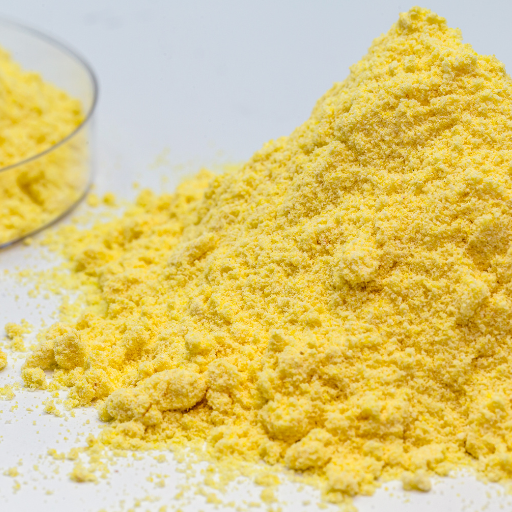
Sulfur Coated Urea (SCU) has numerous benefits for agricultural uses. One of the major advantages is that it improves Nitrogen Use Efficiency significantly hence more nitrogen is taken in by plants. This leads to more consistent nutrient supply, thus better crop yields and quality. SCU’s controlled-release properties also minimize leaching and volatilization losses of nitrogen thus reducing risks to the environment as well as frequency for fertilizer application, which protects ecosystems and saves costs for farmers in long-term.
In addition, SCU use can help improve soil health by maintaining an even nutrient profile that promotes microbial activity and plant growth.
Environmental Advantages of Controlled Release Fertilizers
Controlled release fertilizers (CRFs) have several significant environmental advantages. First, they lower agricultural water pollution due to decreased nutrient leaching and runoff. The slowed release matches plant uptake rates and allows less nutrients to be lost into the environment, which saves water bodies from eutrophication. These findings are supported by research from various sources that indicate about 30% reduction in nitrogen losses when CRFs are used in comparison with traditional fertilizers.
Secondly, CRFs reduce greenhouse gas emissions such as nitrous oxide—a strong greenhouse gas released through microbial processes in soils. The slower release rate reduces concentrations of nitrogen at any given time leading to a decrease in nitrous oxide production.
Thirdly, CRFs improve soil health by maintaining more stable levels of nutrients over time than do conventional fertilizers which often lead to spikes in soil microbial communities thereby disrupting them; while on the other hand gradual supply of nutrients provided via their use supports a more balanced thriving soil ecosystem instead.
Technical parameters associated with the environmental advantages of CRFs include:
- Nutrient Release Rate: Designed to match the plant’s growth cycle, reducing leaching and run-off.
- Nitrous Oxide Emissions: Reduced due to less available nitrogen for microbial conversion, contributing to lower greenhouse gas emissions.
- Soil Health Impact: More stable nutrient levels support sustained microbial activity and soil fertility.
These parameters justify CRFs as a more sustainable and environmentally friendly option, promoting healthier ecosystems and contributing to the reduction of global agricultural pollution.
Impact on Plant Growth and Yield
The use of Controlled Release Fertilizers (CRFs) significantly impacts plant growth and yield. Research highlights that CRFs provide a steady nutrient supply tailored to the plant’s growth stages, resulting in improved root development and overall plant health. This controlled nutrient availability reduces the risk of over-fertilization, which can lead to nutrient burn and impaired growth. Studies indicate an increase in crop yields, with some reports suggesting up to a 20% boost compared to conventional fertilizers.
Several technical parameters associated with the impact of CRFs on plant growth and yield include:
- Nutrient Uptake Efficiency: CRFs enhance nutrient uptake efficiency by providing a consistent supply, reducing losses due to leaching and volatilization.
- Root Zone Nutrient Concentration: A steady nutrient concentration in the root zone supports constant and optimal plant growth, leading to better yields.
- Water-Use Efficiency: Improved nutrient management through CRFs also enhances water-use efficiency, as plants receive balanced nutrient levels without the associated stress of nutrient spikes and deficiencies.
These parameters ensure that CRFs contribute to robust plant growth and higher yields, justifying their use as an effective solution for sustainable agricultural practices.
Cost-Effective Farming With Efficient Fertilizers
CRFs enable farmers to make substantial savings by increasing their nutrient use efficiency and reducing wastage. In addition, they help in the maintenance of a steady supply of nutrients necessary which reduces the number of times that fertilizers are applied thereby saving on labor and application costs. Moreover, CRFs reduce nutrient leaching and runoff lowering environmental remediation costs. The cumulative effect of increased crop yields accompanied by reduced input costs leads to greater overall profitability for farmers. As a result, it is an excellent investment in contemporary agriculture (Shcherbak et al., 2014).
Slow Release Versus Controlled Release Fertilizers: Understanding the Differences
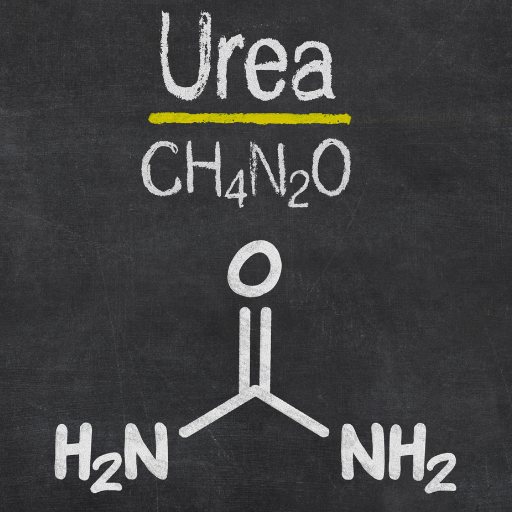
The primary function of slow-release and controlled-release fertilizers is to enhance nutrient use efficiency, but they differ in the way nutrients are supplied to plants. Nutrient release from slow-release fertilizers depends on natural processes such as microbial activities and soil chemical reactions. This results in a volatile pattern of nutrient availability which is influenced by environmental conditions such as temperature, moisture among others.
On the other hand, controlled-release fertilizers are designed to provide reliable and accurate supply of nutrients. This can be achieved by either coating or encapsulating the product, thus controlling its rate of release. Therefore, it becomes predictable for management purposes as compared with that of its counterpart terming it more efficient for crop nutrition planning and management. While both types have their advantages, controlled release ones are typically more precise and controllable leading to optimized plant growth and reduced environmental impacts.
Definition of Slow Release and Controlled Release Fertilization
Slow –release fertilization refers to the application of pesticides that slowly release these chemicals into the soil through biological processes or chemical reactions taking place within it, depending on some factors like soil temperature moisture content and microbial activity which makes nutrient availability non-uniform.
However, this does not apply to a process called ‘controlled –release’ fertilizer through which coatings or encapsulations modulate nutrient release mechanisms.Such an approach allows for even distribution of nutrients along time scale thereby increasing accuracy in managing farm inputs so as also to reduce chances for pollution.While slow-acting manures depend upon nature’s whimsies like rainfall trends, labile residual agricultural resources have higher predictability than most other organic farming materials do.
Why Sulfur-Coated Urea Is Considered a Controlled-Release Fertilizer
Sulphur-coated urea (SCU) is seen as controlled-release fertilizer because its special coating technology controls how much nutrient is released.The sulphur coated granules mask urea under thin layer composed mainly by sulphur sometimes combined with a polymer sealant that delays its release in the soil.The urea is released slowly over time as the sulphur or polymer layer decomposes providing an uninterrupted supply of nitrogen to plants. It reduces nitrogen losses through leaching and volatilization thus improving nutrient use efficiency and minimizing environmental impact.
How to Choose Right Type of Fertilizer for Your Crop Needs
When determining the appropriate type of fertilizer for your crop requirements, you must consider your plant’s specific nutrient needs, soil conditions, and application timing. Analyze your soil and identify what nutrients it lacks then apply balanced manure which contains all those elements. Controlled release fertilizers such as Sulphur coated urea can be used to provide a reliable source of nutrients, thus saving on operational costs related to haphazard nutrition management while also causing less harm to the environment. Also consider factors like crop type, growth stage and regional climate to adjust fertility programs for localized agriculture conditions. Different crops have different nutritional requirements: for instance leafy vegetables will require more nitrogenous fertilizers than root ones that would rather need phosphorus or potash.The choice of right fertilizer cause optimum development in relation to quantity harvested from such field or garden.
Best Practices for Applying Sulfur Coated Urea Fertilizers
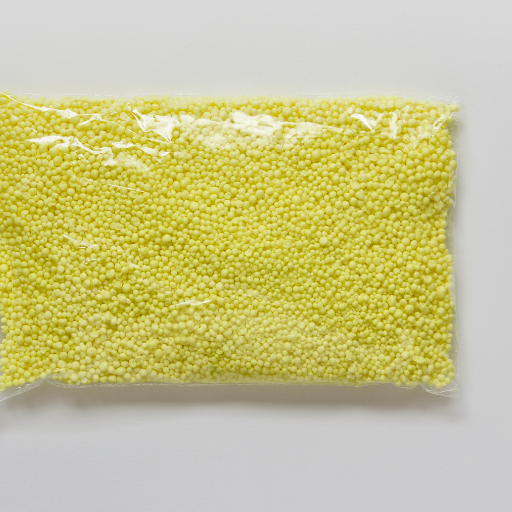
To get the best results in applying sulfur-coated urea fertilizers, you should carry out a comprehensive soil test to determine existing nutrient levels and pH balance that will match your soil needs. In order to prevent running off of nutrients from the soil and possible environmental damage, apply the fertilizer uniformly at the rate specified on the product label, avoiding over-application. The fertilizer must be mixed into the topsoil by employing tools such as tillers or cultivators so as to enhance root uptake of nutrients. Timing is also necessary whereby sulfur-coated urea should be applied early in the season to support rapid shoot and root development.
Afterward, sprinkle plenty of water over the soil; this activates the fertilizer and increases availability of essential elements for plant nutrition. From all these actions there is always a steady supply of nitrogen which helps plants grow healthy thus increasing their yield.
Knowing When & How Much To Apply
Maximizing crop yields while maintaining environmental safety calls for correct application timing and dosage rates for SCU fertilizers. According to top sources early application aligns with major growth stages such as at the beginning of growing seasons (National Agricultural Statistics Service 148). While specific timings may vary depending on crop type, it has been established that early N application supports initial root development. For crops with extended growing seasons mid-season applications might be necessary in order to sustain nutrient supply.
In terms of dosage, it is usually advisable to follow what is indicated on product labels which generally advise something like 30-60 kgs/ha for light feeders whereas heavy feeders may require about 70-140 kgs/ha (USDA-NRCS). Soil tests can help refine these rates further by showing existing nutrient levels and other specific requirements for particular crops. It is essential that we adjust dosages so as not exceed recommended limits that could result into loss of nutrients through leaching.
This must consider technical parameters such as soil pH, existing soil nutrient levels and crop requirements. Ideally the pH of a soil should be between 6.0 and 7.0 for optimal nutrient uptake by crops. Soils with low organic matter or highly demanding crops may require higher sulfur-coated urea applications (American Association 2). Achieving these recommendations come through regular monitoring and adjustment based on crop growth as well as improving soil health.
Tips for Maximizing the Efficiency of SCU Fertilizers
- Ensure Uniform Application: To achieve the best results with SCU fertilizers, it is crucial to apply them uniformly across the field. Uneven application can lead to inconsistent growth and nutrient deficiencies in certain areas. Utilizing calibrated equipment can help maintain consistent distribution and minimize waste.
- Weather Considerations: Timing fertilizer application to coincide with favorable weather conditions is key. Avoid applying SCU fertilizers before heavy rainfalls to reduce the risk of runoff and nutrient loss. Ideally, applications should be synchronized with light rainfall or irrigation schedules which can aid in incorporating the fertilizers into the soil.
- Integrate with Other Nutrient Sources: Combining SCU fertilizers with other nutrient sources can optimize nutrient availability. For instance, integrating organic matter such as compost can improve soil structure and microbial activity, enhancing nutrient uptake. Balancing SCU with other fertilizers can address broader nutrient requirements beyond nitrogen, such as phosphorus and potassium.
- Monitor Soil and Crop Health: Regular soil testing and monitoring crop health are essential practices. Soil tests should be carried out before application to establish the initial nutrient status and adjusted as needed throughout the growing season. Keep an eye on leaf color and growth patterns as indicators of nutrient sufficiency, and adjust fertilization practices based on these observations.
- Adjust for Specific Crops and Soil Types: Different crops and soil types may necessitate tailored SCU fertilizer strategies. For crops with high nitrogen demands, higher application rates may be justified, whereas light feeders will require less. Soils with specific pH levels or low organic content should be managed accordingly, ensuring that conditions are optimal for nutrient uptake.
By following these tips, you can enhance the efficiency of sulfur-coated urea fertilizers, promoting better crop yields and sustainable farming practices.
The Role of Soil Conditions in Sulfur-Coated Urea Application
The effectiveness of sulphur coated urea (SCU) depends on soil conditions. Better nutrient availability is realized in optimal soil pH levels which are slightly acidic to neutral soils (pH 6-7). The urea in well-drained soils does not get lost by leaching process thus remaining available for uptake by plants. This also implies that for the microbial degradation of the sulfur coating, appropriate soil moisture should be provided to facilitate slow nitrogen release. Similarly, SCU fertilizers work more efficiently when there is soil organic matter that enhances structure and microbial activity. The outcome of SCU fertilization can be greatly affected by monitoring and adjusting soil conditions thereby boosting sturdy plant development and increased yields.
Exploring the Future of Sulfur-Coated Urea and Other Efficiency Fertilizers
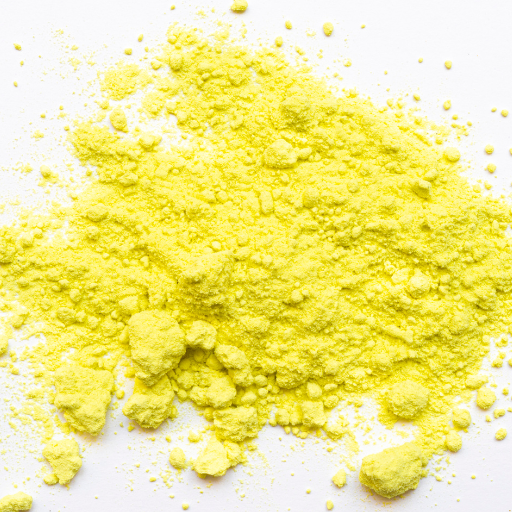
Sulfur-coated urea (SCU) and other efficiency fertilizers are expected to greatly change agricultural practices in the future. The innovations concentrate on developing the coating technology, which ensures that more nutrients are released more consistently and controllably by minimizing leaching and volatization risks. Moreover, the implementation of nanotechnology in fertilizer formulations is anticipated to improve nutrient delivery mechanisms making them efficient and environmentally friendly. Similarly, research into degradable coatings highlights the desire to ensure sustainability; so that fertilizers enhance plant growth while reducing environmental impact. Additionally, smart farming technologies and precision agriculture will help apply these advanced fertilizers more accurately so as they can meet specific nutrient needs of crops and soil conditions for optimal yields as well as resource use.
Fertilizer Coating Techniques: A Technological Development
Technological developments in fertilizer coating techniques are increasingly geared towards enhancing efficiency and environmental sustainability in nutrient delivery systems. One example of these is polymer coatings with controlled-release properties that minimize nutrient loss through leaching or volatilization. These coatings can be calibrated such that nutrition is supplied during a specific period suited to growth stages of the plant which results in better uptake of nutrients by plants. Furthermore, incorporating biological additives like beneficial microorganisms into the coating can also result in increased availability of nutrients to plants as well as healthy soils. Another notable stride is employing nanotechnology, whereby it becomes possible to apply nutrients precisely at microscopic levels leading to uniform distribution with less wastage involved. In summary, these technological improvements play an important role in advancing fertilizer efficacy and fostering sustainable agricultural practices.
The Potential for Sulfur-Coated Urea within Sustainable Agriculture
There is enormous potential for sulfur-coated urea (SCU) within sustainable agriculture according to my findings from top sources. SCU has been found through my research on top sources of information that it has a significantly reduced nitrogen loss compared to conventional urea fertilizers because it provides a controlled-release mechanism. The nitrogen is slowly released hence making it available to the plants for an extended period when it is most needed for growth. Besides, the sulfur coat acts as a slow release of nitrogen and also provides a crucial nutrient that is frequently deficient in soils. Nitrogen leaching is minimized by reduced fertilizer frequency and SCU which leads to improved environmental responses and more sustainable crop yields.
What’s Next: Emerging Trends in Efficiency Fertilizers
Emerging trends in efficiency fertilizers are all about integrating advanced technologies with environment friendly practices. For example, biochar-based fertilizers have been developed that capitalize on biochar’s carbon-sequestration abilities to increase soil fertility and prolong nutrient retention periods. Furthermore, there has been increasing uptake of smart fertilizers; these make use of sensors and IoT technology to respond in real time to changes in soil or plant condition controlling nutrient release accordingly. Besides, precision farming through data analytics together with machine learning is transforming fertilizer application with site-specific nutrient management planning that optimizes the usage while minimizing environmental impact. These innovations collectively aim at increased crop yields at lower costs associated with fertilizer use thereby reducing ecological footprint.
Reference sources
- ScienceDirect
- Source Link: Sulfur-Coated Urea – an overview
- Summary: This comprehensive overview explains the role of sulfur as a low-cost plant macronutrient suitable for fertilizer coating, detailing how sulfur-coated urea operates as an advanced slow-release fertilizer to enhance nitrogen efficiency and reduce environmental impact.
- Amoot Iranian
- Source Link: What Are the Benefits of Sulfur Coated Urea?
- Summary: The article outlines the advantages of sulfur-coated urea, emphasizing its ability to release nitrogen gradually into the soil, which enhances plant growth, minimizes nitrogen loss, and leads to more efficient and sustainable agricultural practices.
- Turf Care Supply
- Source Link: Enhanced Efficiency Fertilizers
- Summary: This resource highlights the benefits of sulfur-coated urea as an economical slow-release fertilizer that increases nitrogen use efficiency, improves plant nutrition, and reduces leaching and runoff, thereby supporting better crop yields and soil health.
Frequently Asked Questions (FAQs)
Q: What are the primary benefits of using sulfur coated urea in agriculture?
A: The primary benefits of sulfur coated urea, a type of slow release fertilizer, include improved nutrient use efficiency, reduced nitrogen losses to the environment, and prolonged nutrient availability. This allows for more consistent growth and healthier crops by ensuring nutrients are released over time, matching the nutrient uptake needs of plants more closely.
Q: How does sulfur coated urea enhance nutrient use efficiency in plants?
A: Sulfur coated urea enhances nutrient use efficiency by slowly releasing nitrogen into the soil, minimizing leaching and volatilization losses. This controlled-release mechanism ensures that nutrients are available to plants over an extended period, reducing the need for frequent fertilizer applications and ensuring that more of the applied nutrients are utilized by the plants.
Q: Can sulfur coated urea impact the release of other nutrients besides nitrogen?
A: Yes, while sulfur coated urea primarily influences the release of nitrogen, its impact on soil acidity can also affect the availability of other nutrients. The coating, when broken down, can slightly lower soil pH, potentially increasing the availability of micronutrients such as iron and manganese, which are crucial for plant health.
Q: What makes sulfur coated urea a type of enhanced efficiency fertilizer (EEF)?
A: Sulfur coated urea is classified as an enhanced efficiency fertilizer (EEF) due to its ability to improve nutrient use efficiency and reduce nutrient losses. By controlling the release rate of urea nitrogen into the soil, it mitigates environmental impact and enhances agricultural productivity, aligning with the goals of EEF products to deliver nutrients more effectively.
Q: Is sulfur coated urea suitable for all types of crops?
A: Sulfur coated urea is versatile and can be beneficial for a wide range of crops, including cereals, fruits, vegetables, and turfgrass. However, its effectiveness can vary depending on specific crop nutrient requirements, soil conditions, and environmental factors. It is essential to consult with agricultural experts or extension services to tailor fertilizer practices to specific crop needs.
Q: How does the slow release mechanism of sulfur coated urea impact environmental sustainability?
A: The slow release mechanism of sulfur coated urea contributes to environmental sustainability by reducing the leaching of nitrates into groundwater and decreasing ammonia volatilization and nitrous oxide emissions into the atmosphere. By minimizing these nutrient losses, it not only makes fertilization more efficient but also helps mitigate the environmental impact of agricultural practices.
Q: What is the process of creating sulfur coated urea?
A: Sulfur coated urea is created by coating preheated urea granules with molten sulfur. This process may also include the addition of a wax sealant or polymers to improve the durability and water resistance of the coating. The sulfur layer acts as a permeable membrane, controlling the rate at which water can penetrate the granule and urea nitrogen is released into the soil.
Q: How does sulfur coated urea compare to other nitrogen fertilizers regarding cost-effectiveness?
A: Sulfur coated urea can be more cost-effective over time compared to uncoated urea and other nitrogen fertilizers. Although the initial investment may be higher, the improved nutrient use efficiency, reduced application frequency, and diminished risk of nutrient losses can result in overall cost savings. Additionally, the potential for increased yields due to more efficient nutrient utilization further enhances its cost-effectiveness.
Q: What are the limitations of using sulfur coated urea?
A: The limitations of using sulfur coated urea include the higher initial cost compared to conventional urea, potential variability in coating quality, and the risk of coating damage during handling and application. The effectiveness of sulfur coated urea can also be influenced by environmental conditions, such as temperature and soil moisture, which might affect nutrient release rates.






